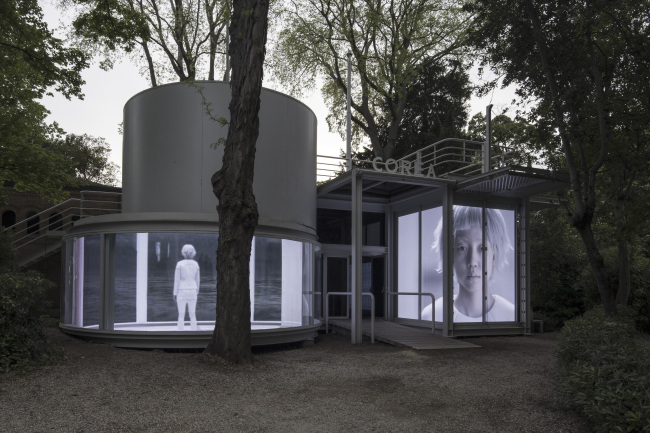Evaluating Korean Pavilion at Venice 2015
Video installation from Moon Kyung-won, Jeon Joon-ho optimized limitations of site
By 원호정Published : Dec. 10, 2015 - 17:51
The Korean Pavilion at this year’s 56th International Art Exhibition at the Venice Biennale attracted over 360,000 visitors May 6 and Nov. 22, more than double the figure from the previous art edition in 2013.
Its site-specific seven-channel video installation without any dialogue that portrayed a possible life in the future drew interest from viewers and critics.
At a symposium Wednesday at Artist’s House in Jongno-gu, Seoul, held to evaluate the results of this year’s exhibition, everyone seemed to agree that the installation, titled “The Ways of Folding Space & Flying,” was the biggest achievement of this year’s show for how it optimized the limitations of the Korean Pavilion’s notorious architecture.
“The most popular form of exhibition space is the ‘white box,’” said commissioner and curator Lee Sook-kyung as she pointed at a picture of the Korean Pavilion, which features curved glass walls. “This is far from a ‘white box.’ The next most popular form is the ‘black box,’” she added, prompting a few laughs. “This isn’t that either.”
Rather than trying to create a piece that would be shown to its best advantage at the pavilion, Lee decided instead to make the pavilion part of the exhibition piece. She and the artists Moon Kyung-won and Jeon Joon-ho built an exact replica of the pavilion in Namyangju, Gyeonggi Province, and filmed a video about a woman living inside the pavilion, which was reimagined as a laboratory.
LED screens covered the glass walls at the Pavilion in Venice, keeping the building’s interior dark for the other video channels while making the Korean Pavilion glow at night, creating a “torch” concept thanks to the pavilion being on a relatively high ground.

“Every single artist who has exhibited there has complained about the architecture,” said Jeon. “They say all their focus and energy goes into making the architecture work, rather than on their piece,” he added.
Although this year’s exhibition was a success because of the work’s site-specific nature, both Lee and the artists seemed to support an overhaul of the pavilion for future artists. Designed by architects Kim Seok-chul and Franco Mancuso, the Korean Pavilion was built in 1995.
Lee mentioned the renovation of the Australian Pavilion, noting that a restructuring would be possible if funds became available but also acknowledging the need for rigorous and objective evaluation of such a project as it would be state-funded.
The Korean Pavilion exhibition is run by Arts Council Korea, under the purview of the Ministry of Culture, Sports and Tourism.
By Won Ho-jung (hjwon@heraldcorp.com)



![[Herald Interview] 'Amid aging population, Korea to invite more young professionals from overseas'](http://res.heraldm.com/phpwas/restmb_idxmake.php?idx=644&simg=/content/image/2024/04/24/20240424050844_0.jpg&u=20240424200058)













![[KH Explains] Korean shipbuilding stocks rally: Real growth or bubble?](http://res.heraldm.com/phpwas/restmb_idxmake.php?idx=652&simg=/content/image/2024/04/25/20240425050656_0.jpg&u=)

